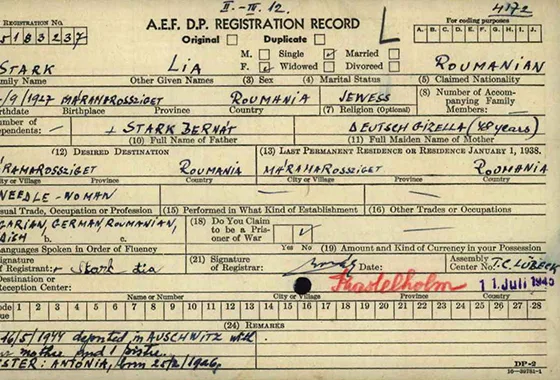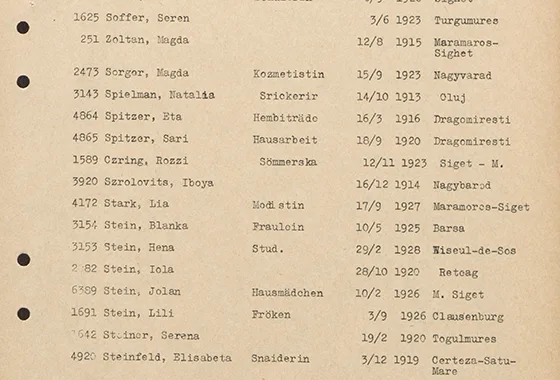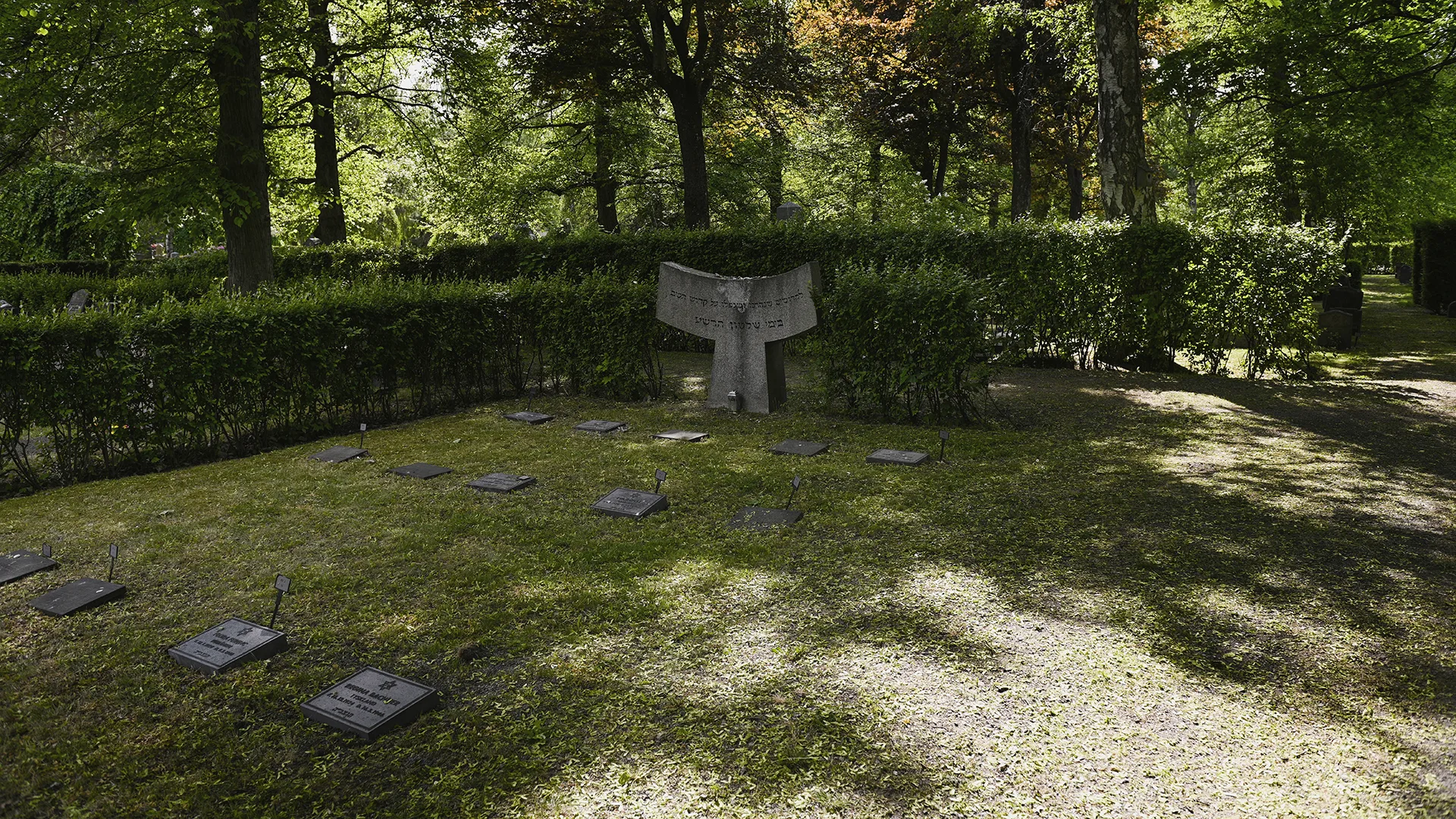Sighet is located in the pastoral region of Maramures, which had sometimes belonged to Hungary and other times been part of Romania. It had a mixed Hungarian, Romanian and Jewish population. Lia lived here with her mother Gizella and sister Antonia, who was one year older. Her father, Bernat, had worked as a machinist but died in an industrial accident in 1934, leaving Gizella alone with her daughters. Lia attended five years of primary school in Sighet before studying to become a dressmaker.
She was only 12 years old when the Germans invaded Poland in September 1939. There were almost 10,000 Jews living in Sighet at the time, including the two sisters Hédi Fried and Livia Fränkel. In 1940, neighbouring Hungary, which Sighet had been part of before the end of World War I, annexed the entire area where the town was located. Lia and other Jews were now under Hungarian rule. Before the war broke out, Hungary had become close to Nazi Germany and was now allied with them. The Jews in Hungary and the areas conquered and annexed by Hungary now began to suffer from discriminatory, anti-Jewish laws, inspired by the German Nuremberg Laws. Jewish rights were taken away and they were prohibited from holding certain jobs and marrying non-Jews, among other things. While the anti-Jewish laws made life difficult for Jews in Hungary, it was not comparable to what was happening to Jews in Poland, the Baltic States and Ukraine at the time.
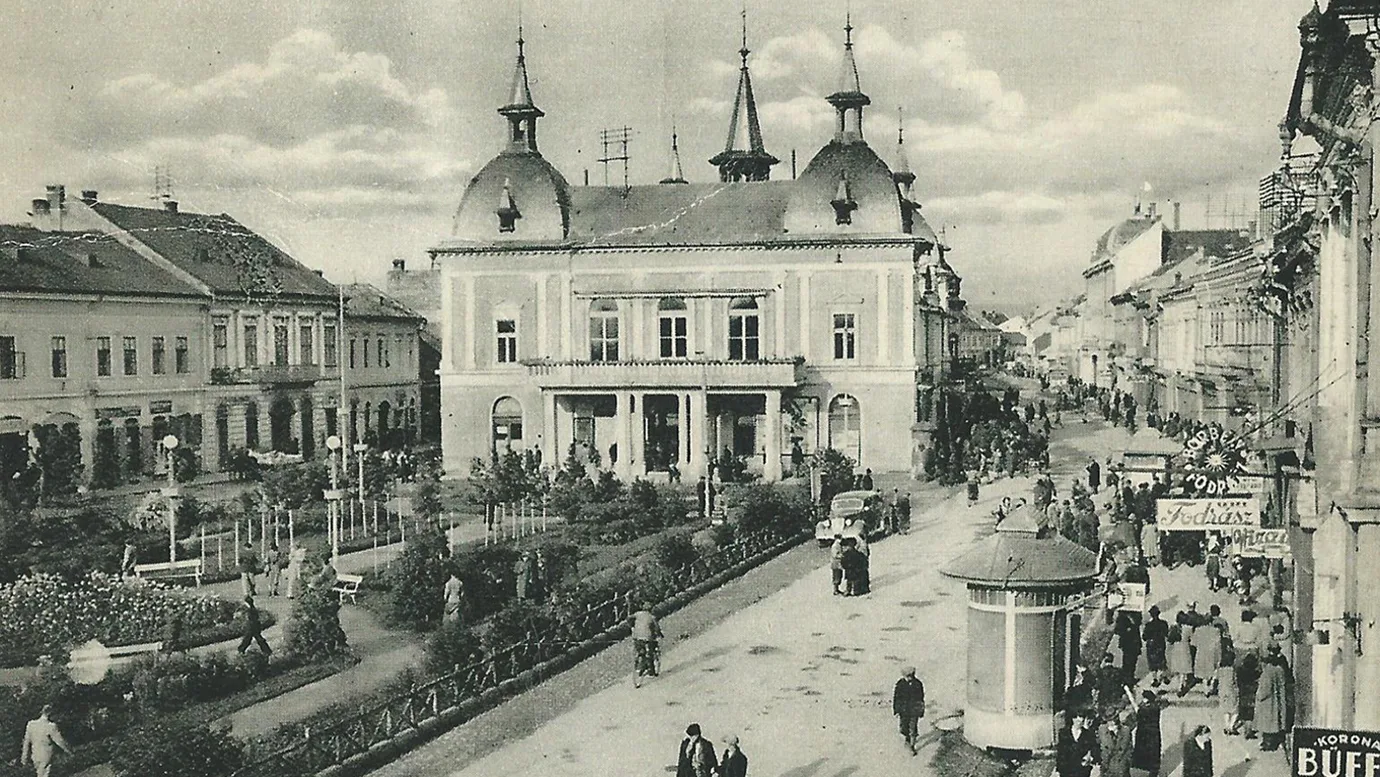
The first real concern among the people of Sighet began to spread in the summer of 1941, when thousands of Jews without Hungarian citizenship, who had fled to the area to escape the Nazis, were arrested. They were detained by Hungarian police officers and loaded onto freight wagons, which took them to Ukraine. There, over 20,000 Jews were murdered by 'Einsatzgruppen' - Nazi paramilitary death squads - in what is sometimes considered as the first major massacre of the Holocaust. After the difficult summer of 1941, life returned to a temporarily calmer state.
But everything changed in the spring of 1944. Despite severe pressure from the Nazis and its anti-Jewish laws, Hungary had until now refused to deport Hungarian Jews to death. Instead, the Hungarian government had tried to negotiate with the Allies after the Axis powers' heavy losses on the Eastern Front in 1943. Nazi Germany therefore chose to invade and occupy Hungary in March 1944 to stop the peace negotiations. Immediately, the Germans established ghettos in major Hungarian cities, where the Jews were forced to live. This was all part of a plan by senior SS leader Adolf Eichmann to murder Hungarian Jews as quickly as possible.
The Jews were forced to move into a ghetto - a segregated area of the town. After a month in the crowded ghetto, the Stark family and other ghetto residents were taken to the local railway station. There, they were loaded onto cattle wagons, given a piece of bread and a small amount of food before being locked up. The trains now rolled westwards, towards Poland, towards Auschwitz and towards death.
Lia, her mother Gizella and sister Antonia arrived at Auschwitz on the May 21, 1944. All three survived selection, while seeing their friends and relatives sent to their deaths. In Auschwitz, Lia and the others were subjected to tough slave labour, despite having to survive on a watery soup made from turnips, shared with four others, and a small piece of bread a day. After almost two months in Auschwitz, Lia and her sister Antonia were selected for hard labour at the Christianstadt labour camp in what is now Krzystkowice, western Poland.
The Christianstadt camp was a so-called satellite camp of the large Gross-Rosen concentration camp, also in western Poland. Christianstadt was one of Nazi Germany's largest munition factories and Lia and Antonia were forced to clear shells. Their mother Gizella was not selected for work and was forced to remain in Auschwitz. The daughters never saw their mother again. Gizella was probably murdered in Auschwitz, aged around 48.
After eight difficult months in the camp, the Allied forces had begun to approach. Lia and other prisoners were now forced to march towards Germany on foot in the bitter February cold. They were severely malnourished by this time and many died of exhaustion, cold or starvation during the long marches. Those who could not keep pace during what became known as death marches were shot dead. The marches lasted almost six weeks, until the surviving prisoners were finally transported to the Bergen-Belsen concentration camp. In the overcrowded and disorganised camp, diseases such as dysentery, diphtheria, typhus, and tuberculosis spread and killed thousands. Lia and Antonia were severely emaciated and weak and eventually Antonia passed away. She had just turned 19.
Liberation and time in Sweden
On the April 15, 1945, Bergen-Belsen was liberated by British forces. At that time, the camp held more than 60,000 prisoners, most of them Jews and the majority in a terrible state of starvation and disease. Thousands of dead prisoners were lying unburied in the camp. Lia and other surviving prisoners were moved out of the camp and received medical care. Meanwhile, the Allied forces tried to register all survivors. On her registration card, Lia states that she wishes to return to her home town, Sighet. She was told by the British that she had been diagnosed with tuberculosis.
Lia was one of over 9,000 survivors who were brought to Sweden for treatment by UNRRA transportation. After a period in the transit camp and the Swedish field hospital in Lübeck, Lia, who was severely ill with tuberculosis, was taken to Sweden on the S/S Kastelholm on July 11, 1945, together with Klara Schwartz, Rozsi Hirschl and others. The Kastelholm docked in Stockholm after a four-day voyage. Lia, Klara, Rozsi and many of the other seriously ill were immediately transported to the emergency hospital in Sigtuna. Just after a month in Sigtuna, Lia was transferred to Söderby Hospital, south of Stockholm. Although she was starting to feel better she was extremely thin, weighing just under 30kg, and had difficulty eating and drinking.
On November 5, 1945, shortly after 8pm, Lia died in hospital from tuberculosis, having just turned 18. The doctor in charge of the case notes in her medical record wrote: "Her condition has been steadily deteriorating and it is surprising that the patient has been able to live so long without food or drink. For the last few weeks, it has been practically impossible to get any food of any kind into her and for the last few days she has not been drinking. She has been clear-headed continually and fully aware of the poor prognosis."
Lia Stark was probably the only survivor of her family. There are almost no other documents about her or her family.
Lia's route
The map shows the places Lia was forcibly transferred or travelled to, from Sighet where she was born to the Northern Jewish Cemetery. Click on the information symbol to see all the locations, listed in chronological order.
About Lia Stark
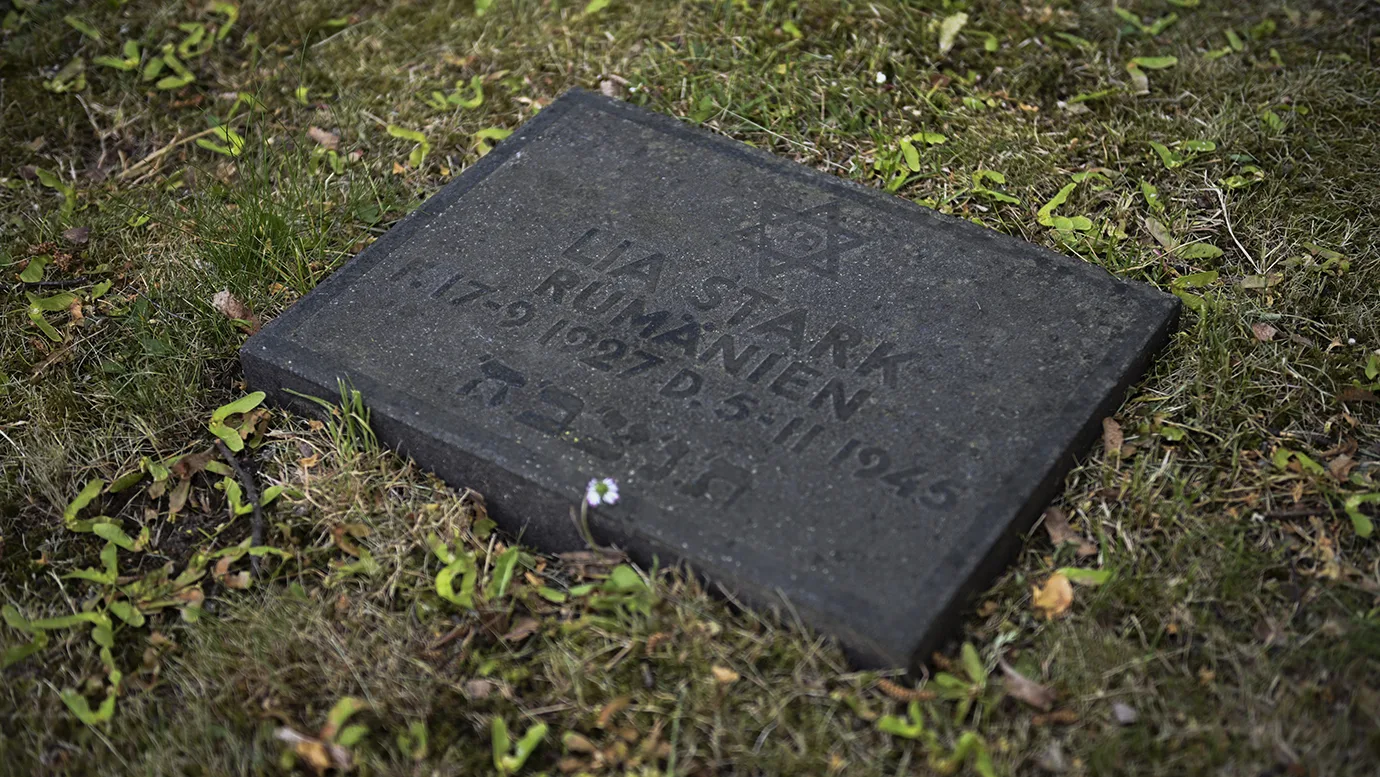
About Lia's father Bernat Stark
About Lia's mother Gizella Stark
About Lia's sister Antonia Stark
Learn more about the fates of other
Here you will find links to the "Förlorade röster" [Lost Voices] collection page as well as links to all the personal texts, listed by surname.

